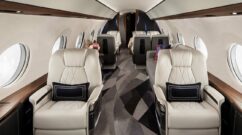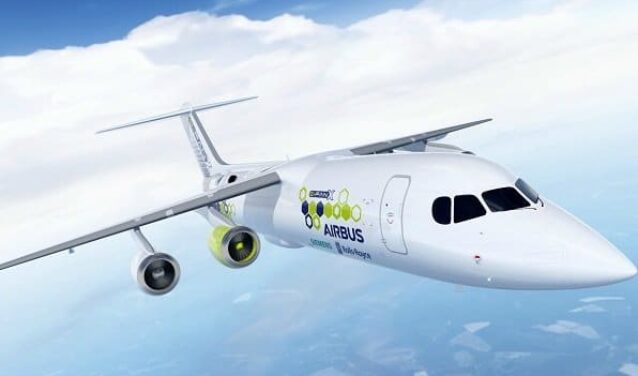Solar Impulse 2 unveils on April 9, 2014, as Onera did on April 7, 100% electric aircraft projects, not conceivable for several decades.
The plane that will be presented for the first time tomorrow on a Swiss air base has little to do with those we know. While the size of the Solar Impulse 2 is close to that of an Airbus A380 (72 meters), its weight (2.4 tons) is barely higher than that of a 4×4. Above all, it will only embark one person at a time, for a truly extraordinary challenge: the first round the world – with stops – a fully electric aircraft, powered by solar energy.
In 2010, a first prototype of the Solar Impulse had already flown for 26 hours in a row. The new version designed by Bertrand Piccard and André Borschberg, the promoters of this crazy project, will be able to stay in the air for five to six days, thanks to weather conditions. Larger, Solar Impulse 2 is also more resistant – the previous was forbidden to cross the clouds, because its electrical circuits were not waterproof to limit the weight – and more comfortable, even if the improvement is relative: the cabin is not pressurized and only one pilot can board at a time.
Thanks to several industrial partners (Solvay, Altran, SunPower, Bayer, etc.) and scientists (EPFL), the aircraft benefits from the latest innovations in materials, batteries and solar cell efficiency. But its lightweight, carbon-fiber structure is more reminiscent of the Wright Brothers or SantosDumont than modern aircraft. “Solar Impulse is a symbol of all that can be done with modern technologies pushing them to the maximum, says Bertand Piccard. It’s also a way to show that energy challenges can be solved, at least in part, by technological progress. “
Today, manufacturers are betting on the “plus” electric plane, for example, capable of rolling on the ground without the input of its reactors. What about the real electric propulsion plane? Engineer fantasy, technological demonstrator or true concept of the future? A team of researchers from the Aeronautics and Space Research Center, with the help of CEA Tech, last night presented its response to a hundred hand-picked manufacturers at the Aéro-Club de France. The fruit of their prospective exercise is a real airplane, certainly still paper, but that could well fly someday.
“Our conclusion is that the electric-powered aircraft is technically feasible and theoretically feasible for commercial transport in the next two to four decades, depending on the intended missions,” summarizes Antoine Guigon, director of the aerospace prospective department of the Onera. “This is an important objective because if the environmental footprint of the aeronautics is quite small compared to that of the car, it is strong on the man, in particular because of the noise”, recognizes Pierre Duval, organizer of the evening for the Aero-club de France and president of the environment commission of the International Aeronautical Federation.
If the deadline seems so distant, it is because the problem is complex. Aeronautics remains dependent on kerosene because oil is a concentrate of energy, flexible and easy to use. “In the current state of our knowledge, the electric propulsion will not be able to reach for decades the performance as high as the current propulsion. It is necessary to imagine concepts and technologies of rupture, explains Antoine Guigon. No need to “electrify” an existing device: we must start from a blank page.
PROPELLERS ON THE WING
This is what Onera researchers have done with caution. If they dream of the plane capable of carrying 100 passengers over thousands of kilometers, they have been more modest in tackling the personal business jet, capable of carrying four people over 600 kilometers in less than two hours . Its overall appearance seems familiar, but in reality everything changes: shape, propulsion, energy, aerodynamics … Because electricity allows a break. First, unlike today’s engines, whose performance improves with size, their electric cousins can be small but effective. Exit the huge engines unsightly and penalizing from an aerodynamic point of view. Small keeled propellers are aligned on the rear of the wing.
Rest the food. Impossible to be inspired by the Solar Impulse and its photovoltaic panels, whose performance is still much too low for a plane carrying several passengers. In the Onera project, electricity would be supplied by batteries, but mostly produced on board by a fuel cell. Problem: it will be necessary to store several kilograms of hydrogen at high pressure or in liquid form, which requires a very low temperature. So Antoine Guigon believes that the intermediate stage of a hybrid propulsion is possible, with electricity produced by the energy of thermal engines: “For example, a turbomachine would drive an electric motor. But the concept of plane that would make the most of a combination of thermal and electrical remains to be defined. “
Researchers have identified other obstacles to overcome, including the resistance of on-board electronics to electromagnetic fields that the device will produce itself. This aircraft will also benefit from state-of-the-art navigation systems. “The personal aircraft assumes that it can be sufficiently automated to be within the reach of any pilot, and so it easily integrates into the air traffic with a navigation aid,” says Claude Le Tallec, general aviation mission manager, drones and automated systems at Onera. All these constraints require a multidisciplinary approach. “These are approaches that already apply to the design of any aircraft, but which will be even more necessary because of the accumulation of concepts and disruptive technologies, “says Antoine Guigon, who insists on efforts to produce now to imagine the solutions of the future. “Tomorrow the industry will be naked if it does not imagine, now, the planes of the future. We must consider the solutions of rupture, if not other countries or continents will do it for us. “
Source: By Benoit Georges Journalist Les Echos






